On the shores of Lago Maggiore. The Murders at Meina by David Roberts
Meina is a small village on the Western side of Lake Maggiore, between Arona and Stresa, it is not a large resort , just a tranquil spot with lovely view up the lake towards Switzerland and across to Anghera. In the 1930s, there were just two hotels there, the Hotel Meina and the Hotel Verbano. The Hotel Meina was to become infamous as the site of a massacre.
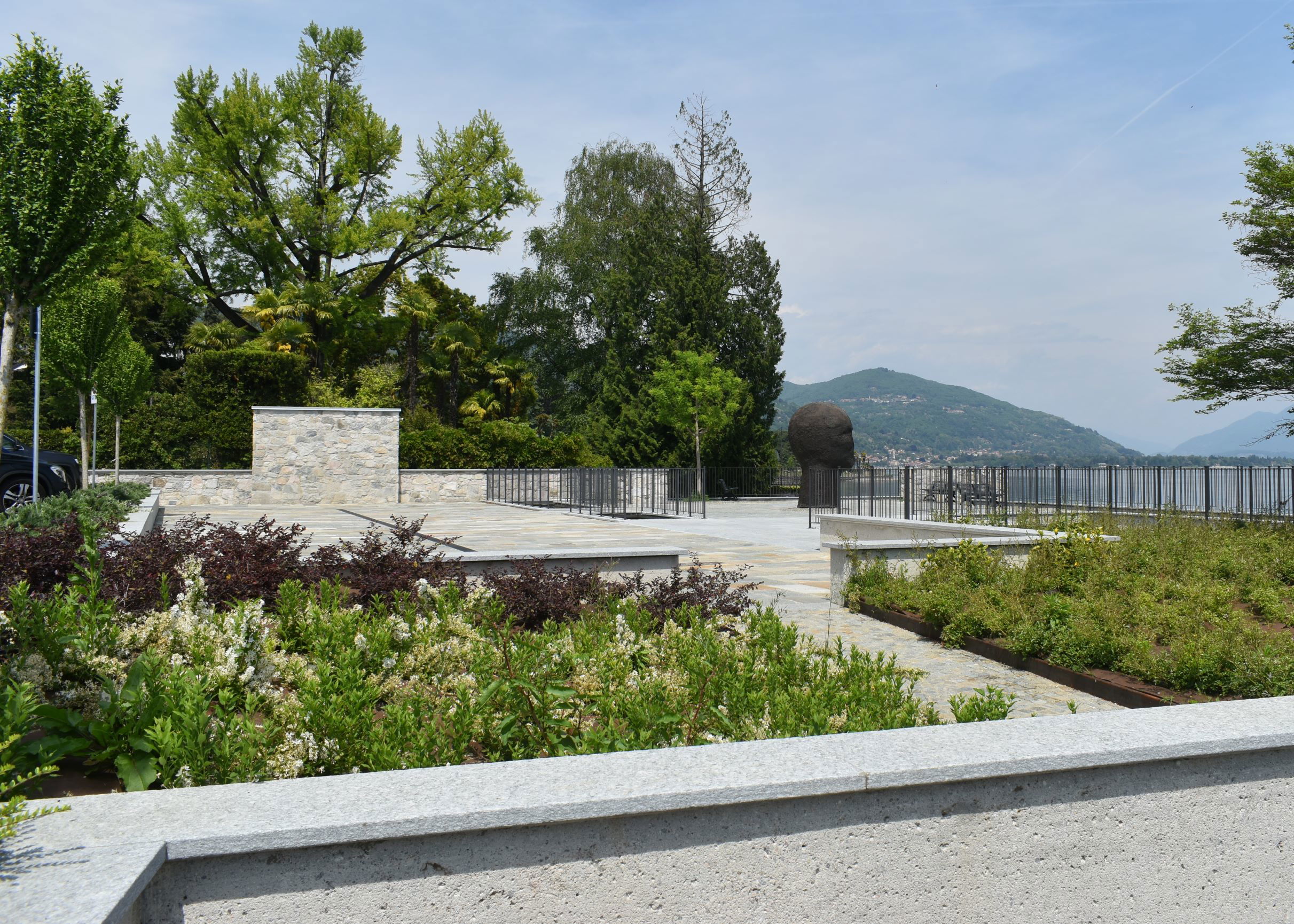
Following the Italian armistice on 8 September 1943 a battalion of the SS Panzergrenadier Division -Liebstandarte SS Adolf Hitler (“LSSAH”) was stationed on the western side of Lake Maggiore to assist with the disarming of the Italian Army. The LSSAH already attained a particularly vile reputation, forming part of the German invasion of Poland, where it was notorious for atrocities, including the murder of 50 Jews in Błonie and the massacre of 200 civilians, including children at Złoczew. It moved to France where on 28 May 1940, at the village of Wormhout, near Dunkirk, it was responsible for the murder of some 80 British and French Prisoners of War. Later during the fighting around Kharkov, a unit under the command of Joachim Peiper gained a nickname "Blowtorch Battalion", after the inhabitants of two Soviet villages were shot or burned. On 12 February Waffen-SS troops of the LSSAH occupied the two villages, where retreating Soviet forces had wounded two SS officers. In retaliation, five days later LSSAH troops killed 872 men, women and children. Some 240 of these were burned alive in the church of Yefremovka. Following this the LSSAH was ordered out of the line, having suffered 2,753 casualties including 474 killed. The division was sent to Italy to help stabilize the situation there caused by the dismissal of Mussolini and the Allied invasion of Sicily The LSSAH arrived on the Po River Plain on 8 August 1943. The LSSAH was given the task of guarding several vital road and rail junctions in the area of Trento-Verona. After several weeks, the division was moved to the Parma-Reggio area. During this period, the Liebstandarte was involved in several skirmishes with partisans. Following the armistice, the division was ordered to begin disarming nearby Italian units. This went smoothly, except for brief, bloody fights with Italian troops stationed in Parma, Cremona and Piacenza on 9 September. By 19 September, all Italian forces in the Po River Plain had been disarmed.
Several Jewish families lived in the villages on the Italian side of the lake, some Jewish Greek refugees, others Italian Jews who had escaped the cities. Many of the Jewish- Greek refugees were from Thessaloniki and had reached Italy with the assistance of Italian Consuls there and in Athens. Their identity and location were passed on to the Germans by local Italian Fascists. Members of LSSAH arrested over 50 of those and held them in several local hotels. The best-known of these massacres was that of the sixteen prisoners held at the Hotel Meina, at Meina. On 19 September officers of the division held a meeting in which it was decided to shoot the Jewish men, women and children and to sink their bodies into the lake. The Jewish prisoners were taken in small groups from their hotels at night on 22 and 23 September, taken to a local forest and shot. The bodies were then placed in sacks filled with stones, rowed out in boats, and sunk in the lake Between 50 and 56 Greek and Italian Jews were murdered by the division in September and October 1943 during the Lake Maggiore massacres Sixteen murders took place at Meina on 22 and 23 September, fourteen at Baveno between 14 and 22 September, two at Pian Di Nava, near Premeno, on 15 September and nine at Arona, three at Mergozzo and two at Orta San Giulio on 16 September. The following day, 17 September, four Jews were killed at Stresa. In October 1943, members of the same battalion murdered the Jewish banker Ettore Ovazza and three of his family members at Intra, near Verbania, also on the Lake Maggiore, and buried the bodies.
The massacres received international notoriety after one of the bodies washed ashore in Switzerland and reported in a local Swiss newspaper. This forced an investigation into the events by two judges of the Liebstandarte division. While members of the division were interviewed no outcome has been recorded and the division was soon moved back to the Eastern Front
Many of the victims of the Meina massacre came from the same families. The Fernandez-Diaz family from Thessaloniki suffered particularly Of Sephardic origin, the family had settled in Thessaloniki in the eighteenth century from Genoa, they were one of the richest and most illustrious in Greece, owning numerous industrial and commercial activities including the brewery "Olympus", an ice cream factory, textile and other factories. Led by the founder Dino and his son Pierre, the family lived at Villa Bianca or Villa Fernandez in Vassilisis Olgas street, an art deco villa built by the Italian architect Pietro Arrigoni.
In October 1940, the Italians made their ill-fated invasion of Greece across the Albanian frontier. Without going into excessive detail, the Italians received a severe mauling from the Greeks who pushed them back over the Albanian frontier. In the end the Germans intervened to support the Ital- in April 1941 and despite the resistance of the Greeks supported by the British, Australian and New Zealand forces, the Greeks surrendered. The Germans and Italians carved up Greece between them. Although the Germans had little appetite for occupying Greece. Apart from the border area with Turkey and around Thessaloniki, the Germans let the Italians occupy the rest of the country. The capital Athens was occupied by both the Italians and Germans. From June 1941, the Jewish population in the Italian zone remained safe and the Italians resisted German demands to deport them. The Germans proceeded to go it alone and pursue the “Final Solution” in the area controlled by them. At the end of 1942, Adolf Eichmann lost his patience and decided not to wait any longer to make the German occupation zone judenfrei. He selected one of his most trusted collaborators, Dieter Wisliceny to take charge, giving him a deadline of six to eight weeks to carry out the task. Wisliceny had previously been involved in deporting the Jewish population of Slovakia, by the time he arrived in Thessaloniki, so was under no illusion about what would happen to the Jewish population. Wisliceny was accompanied in his mission by a particularly sadistic thug, Alois Brunner. Wisliceny and Brunner moved ahead with their task. The Jews of Salonika were instructed, via their rabbis to give up the keys to their apartments and move to ghettos within the city. Some 6,000 families were displaced. From 15 February, the Jews of Thessaloniki were subjected to a curfew and forced to war the yellow star.
The Italians maintained a consulate in Thessaloniki and a selection of brave Italian diplomats began to get as many Jews as possible out of the city. In February 1943, the Consul General was Guelfo Zamboni. A decorated First World War veteran, in 1925 Zamboni had passed the competition t to enter the Italian diplomatic service and subsequently served at the Italian Embassy in Berlin, where he had perfected his German language skills. In February 1943, Zamboni learned from the German commander in Thessaloniki, Max Merten that the ghettoes in Salonika were only a temporary measure and the Jews were destined to be transported to Poland. Zamboni was replaced by Giuseppe Castruccio, another First World War veteran, who had subsequently served in the Italian Consulates at Pittsburgh, Chicago, Sao Paulo di Brazil, and Istanbul. With a decidedly interesting background, Castruccio had been a professional footballer for Genoa ( mainly in the reserve team) before the war and his heroics in the First War had involved attempting to save an Italian dirigible from crashing. As Consul-General in Chicago, Castruccio had been instrumental in arranging Italo Balbo’s arrival with a fleet of planes at the 1933 World’s Fair. The two consuls were supported by their staff. Captain Lucillo Merci a former school teacher from Sud Tirol had served with the Acqui Division during the invasion of Greece. , his German language skills had secured him a position as an interpreter with the German staff in Thessaloniki. This benevolent team of Italian also included Riccardo Rosenburg. He was on the books as the Italian Vice Consul, in fact he was a spy working for the Italian military Intelligence SIM. The consuls and their staffs succeeded in procuring Italian papers which enabled some 350 Jews to escape from Thessaloniki to Athens, and the further to Italy.
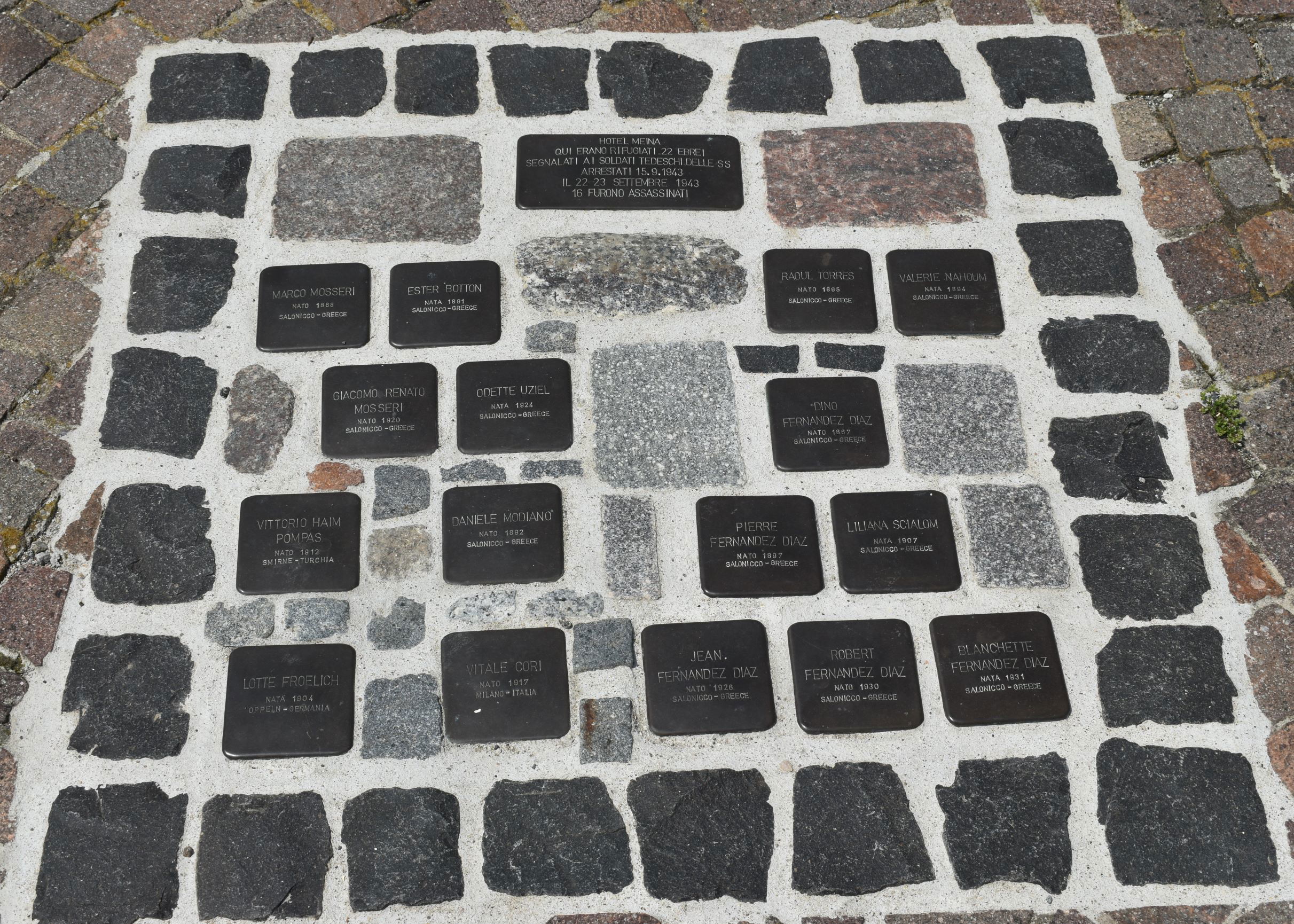
Fearing the persecution, in July 1943 Pierre Fernandez Diaz organized the escape with the whole family from German occupied Thessaloniki, with the help Italian consuls , Lucillo Merci, accompanied them to Venice and from there to Lake Maggiore, considered a safe refuge, where they stayed at the Grand Hotel in Meina. The murdered family members included; Dino Fernandez Diaz (August 9, 1867 Thessaloniki,) his son Pierre Fernandez Diaz (September 14, 1897, Thessaloniki), and wife Liliana Scialom ( June 26, 1907, Thessaloniki,)and Pierre’s three children Blanchette Fernandez Diaz ( July 5, 1931 Thessaloniki), Jean Fernandez Diaz ( February 20, 1926 Thessaloniki). Robert Fernandez Diaz (January 8, 1930 Thessaloniki.)
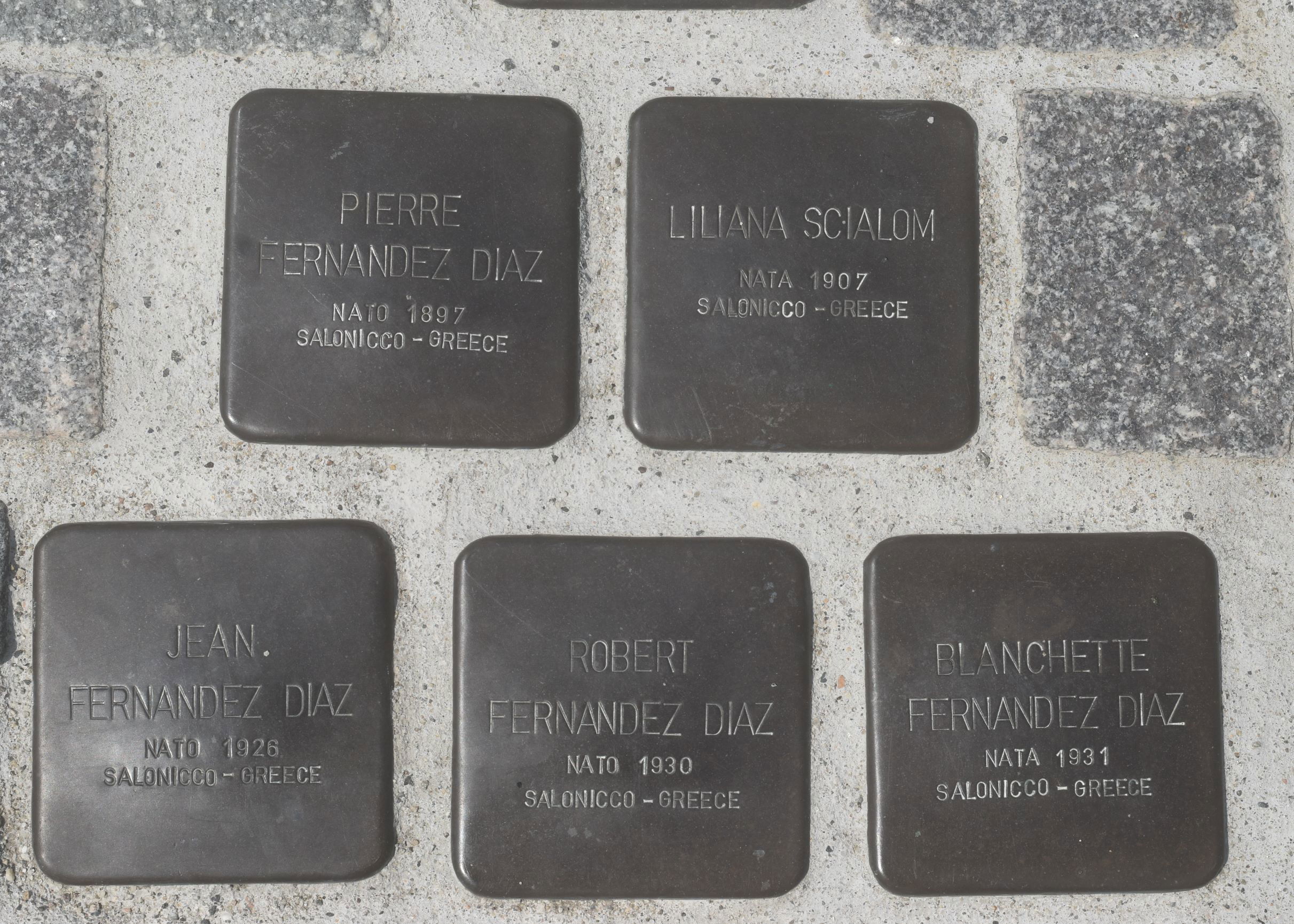
Of their extended family members, their cousins Raoul Torres and his wife Valerie Nahoum were also among the victims. Detained on 15 September 1943, all were summarily killed on the night of 22-23 September. Also murdered were Ester Botton (March 23, 1891, Thessaloniki) her husband Marco Mosseri (July 16, 1888 i Thessaloniki.) their son Giacomo Renato Mosseri ( October 2, 1920 , Thessaloniki.) and his wife Odette Uziel. Vitale Cori born in Milan in 1917. He was the son of Alfredo Cori and Laura De Pierre. He worked at the bar of the Hotel Meina.
Lotte Mazzucchelli Wertheimer Froelich, the daughter of Max Fröhlich and Jeanne Wertheimer, was married to the Milanese lawyer and historian Mario Mazzucchelli. The couple were in Meina on September 15, possibly seeking to escape to Switzerland and at the invitation of the Behar family were at the Hotel Meina when the SS showed up and arrested Lotte Mazzucchelli .Daniele Modiano was born on April 25, 1892, in Thessaloniki. He was the son of Giacobbe Modiano and Matilde Hachim and came from a traditional and large family. His wife Georgette Verbeyst. survived the Shoah. Valerie Nahoum (March 27, 1894, Thessaloniki) and , the daughter of Vittorio Nahoum and Bella. She was married to Raoul Torres. (March 2, 1895 Thessaloniki,) the son of Elia Torres and Nelly Fernandez Diaz. Hotel employee, Vittorio Haim Pompas was born on April 12, 1912 in Izmir, the son of Bension Pompas and Anna Levi.
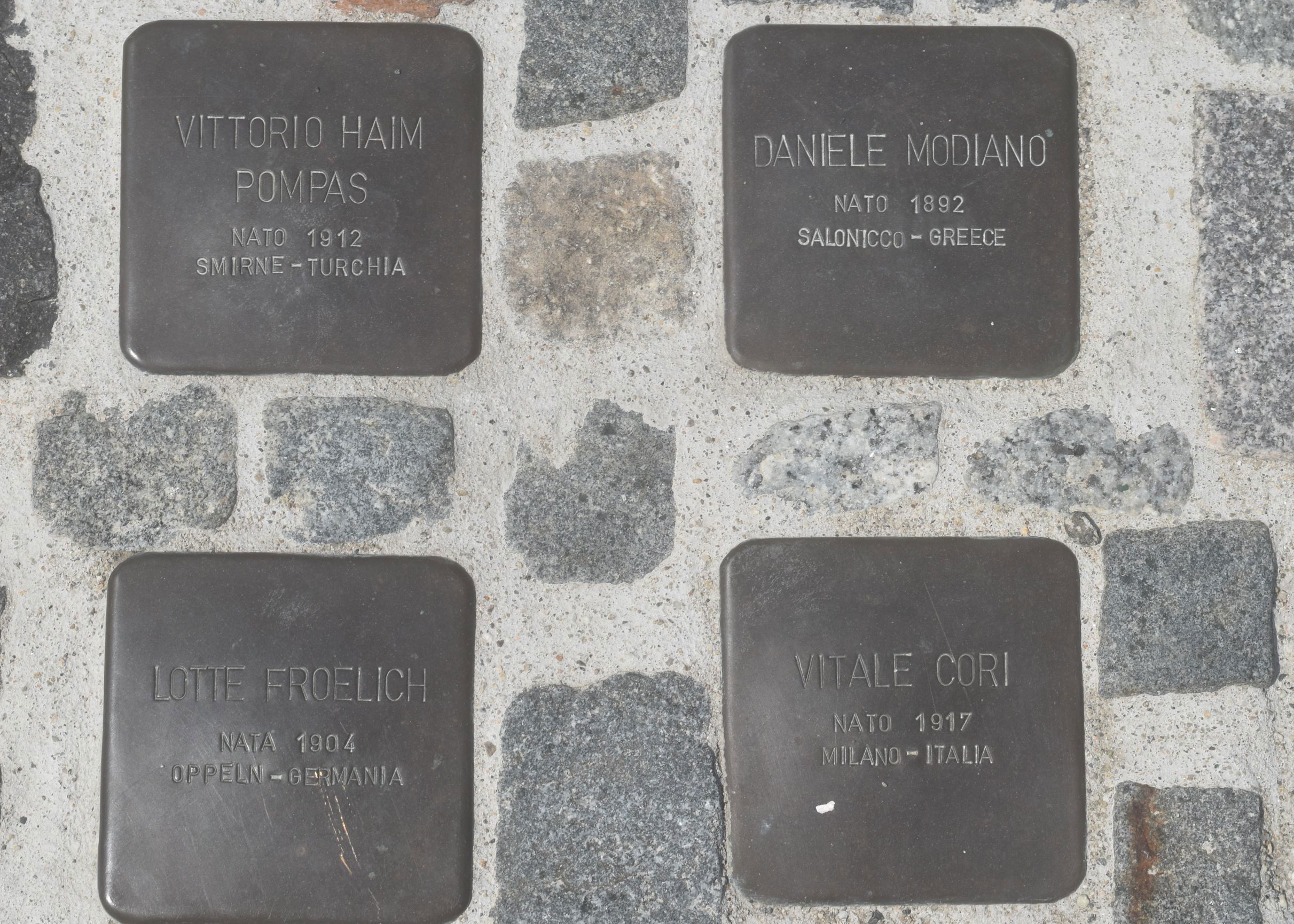
The Hotel Meina was owned by Alberto Behar who lived there with his family, fortunately the Behars had citizenship of neutral Turkey, they were arrested and taken to the German HQ at nearby Baveno. By good fortune, the Turkish Consul in Milan who was a family friend was staying at the Hotel, forced to leave Milan by the Allied Bombing of the city. The consul threatened a diplomatic incident if the Behars were not released. At that point the Germans were still dependent on neutral Turkey for certain raw materials, so an incident was best avoided The Behar family were able to escape to nearby Switzerland Either by accident or design, Riccardo Rosenberg, the SIM agent from Salonika was also at the Hotel Meina on 14 September 1943 ( according to an affidavit he later swore to Allied Military Police in Milan) . He said that he was staying there with the intention of fleeing to Switzerland. Rosenberg testified that he was at the Hotel Meina , when it is occupied by 30 Germans commanded by Leutnant Boldt, who had received information that there were Jews in the hotel. Boldt posted sentries and detained the Jewish prisoners in a hotel dining room. After a thorough examination of documents Rosenburg and family were allowed to leave. He was not allowed to re-enter the dining room, but remained able to communicate through Adriana Galliani, the “Aryan” fiancé of Vittorio Haim Pompas.
On 22 September SS-Hauptsturmführer Hans Krüger, arrived from the garrison at nearby Baveno with instructions to take the 17 prisoners to a concentration camp. They never arrived, the Germans feigned the transportation, killed the prisoners in the woods around Meina and threw the bodies into the lake. The net morning fishermen recovered some of the bodies. Two were identified as Pietro Fernandez and Marco Masseri, both had apparently been shot in the back of the neck. The bodies had been inefficiently weighted down.
After Meina, the LSSAH continued its reputation for Murder. During the Ardennes offensive the unit was responsible for the murder of 84 American prisoners of War near Malmedy and the separate murders of eleven surrendered African-American soldiers from the 333rd Field Artillery Battalion. Apart from units which had been involved in the defence of Berlin, most of the remains of the LSSAH surrendered to the Americas at Steyr in Austria in May 1945.
The Hotel Meina stood abandoned and semi derelict for much of the post-war period, it was finally demolished in 2009.
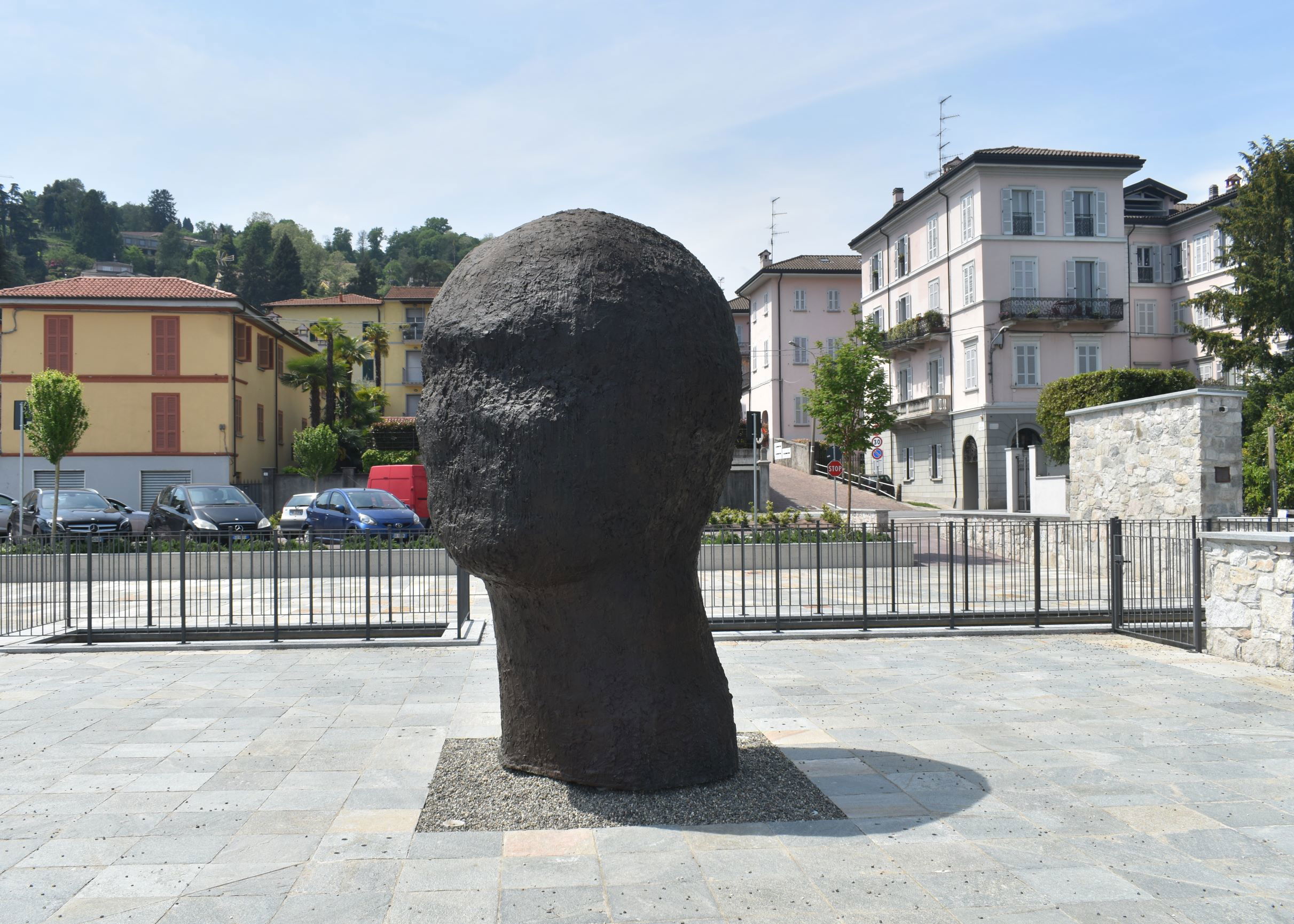
"A head without eyes to see, without a mouth to talk or cry. Just a silent stone which looks like a head"
Eventually after 25 years, the Germans prosecuted five members of the Liebstandarte. In 1968, Hans Krüger, Herbert Schnelle, Hans Roehwer, Oskar Schultz and Ludwig Leithe, were indicted by a court in Osnabrück in 1968 with 22 counts of murder. The court found the first three guilty of murder and sentenced them for life while the other two received a jail sentence of three years as accessories in the crime. The case was taken to Germany's highest court, the Bundesgerichtshof, which ruled that, while not overturning the guilty verdict, the perpetrators freed the perpetrators on a technicality. As the crime had been committed in 1943 and was actually investigated by the division at the time, , the usual start date for the statute of limitations for Nazi crimes, the date of the German surrender in 1945, did not apply, meaning the 1943 massacre's statute of limitations had been expired. For the murder of the Ovazza family, Austrian SS-Obersturmführer Gottfried Meir was charged in 1954 in Klagenfurt but found not guilty. He was however convicted in absentia by a military court in Turin in 1955 and sentenced for life but never extradited to Italy
Once the Hotel Meina had been demolished in 2009, it was supposed to be replaced by a monument. The Head of Meina was commissioned from the Israeli sculptor Ofer Lellouche. Without going into too much detail, there appears to have been some complex and typically Italian property dispute going on , so despite having a contact Lellouche was owed the payment for the deposit and the statue remained in Tel Aviv for years . Lellouche recalled that he had initially refused the project since the subject matter seemed too terrible to be transformed into a work of art. He went to Meina for a visit- seeing such a beautiful place, but also being keenly aware that something terrible had happened there. . In his own words
“ I felt that this lake which is one of the most beautiful places in the world was hiding a dark secret. To honour the memory of the dead I bent down to the floor and pick up a small stone which I deposit at the shore of the lake. Which is the way, we, Jews, honour, in cemeteries, the memory of our dead”.
That inspired him for the design. A head without eyes to see, without a mouth to talk or cry. Just a silent stone which looks like a head”. The Head was finally installed and inaugurated in February 2022, around 15 years after it had first been ordered. Lellouche intended the sculpture both as a memory and a warning, “of course it is about memory. But memory should not be fixed only on the past. Memory should face the future. It should give us strength to look upon future with faith and courage”. Before the head was unveiled,, the victims were also commemorated in another way,
The victims of the massacre in Meina are also remembered by 17 Stolpersteine on the lakeside installed by the German artist Gunther Demnig . The memorials are little cubes of stone (10x 10 cm), placed in front of the doors of houses which were the last residences of those deported to Nazi camps, remembering their names , dates of birth , date and place of deportation and date of death. In Europe around 70,000 Stolpersteine have been placed since 1995.
The project at Meina was realised thanks to the efforts of Rossana Ottolenghi, daughter of Becky Ottolenghi Behar, whose family were the only ones to be saved from the Hotel and who made it her life’s work to preserve the memory of what happened there and pass it down to future generations.
